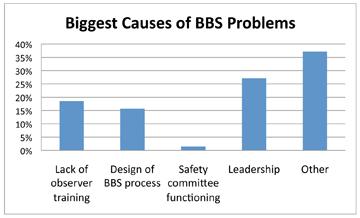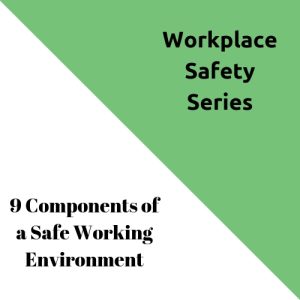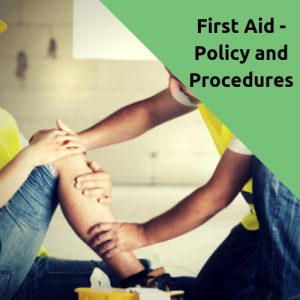PPE and the loss of Chevron Deference
Here is the next in my series where I examine the effect the loss of Chevron deference could have on OSHA standards and workplace safety, this week we are reviewing PPE.
OSHA 1910.132, which covers personal protective equipment (PPE), often contains ambiguities that necessitate further clarification. Here are some of the common areas of ambiguity and the issues that frequently require interpretation:
- Assessment of Workplace Hazards:
- Employers are required to perform a hazard assessment to determine the necessity of personal protective equipment (PPE), yet the standard does not offer detailed criteria or methodologies for carrying out these assessments. This lack of specificity can create considerable uncertainty regarding what qualifies as a sufficient or adequate hazard assessment. Without clear guidelines on how to systematically evaluate workplace hazards, employers may struggle to ensure that their assessments are thorough and compliant. This ambiguity can lead to inconsistencies in how hazard assessments are performed, potentially resulting in varying levels of protection and compliance across different workplaces. Consequently, employers might find it challenging to ascertain whether their assessment processes meet the required standards, which could impact their ability to effectively safeguard employees and adhere to regulatory requirements.
- Here you can read the 1910 statute on hazard assessments, and without Chevron deference, you can see how there is much left to interpretation.
Check Out: PPE Hazard Assessment and Certification
- Selection of Appropriate PPE:
- The standard stipulates that personal protective equipment (PPE) must be “appropriate” for the tasks and hazards identified in the workplace. However, the term “appropriate” can be somewhat vague and open to interpretation, leading to uncertainty about what constitutes the right type of PPE in various situations. This ambiguity can give rise to questions regarding the specific type of PPE required, as well as its material, durability, and overall suitability for the identified hazards. Employers may find it challenging to determine which PPE will offer adequate protection under the specific conditions they face, potentially leading to difficulties in ensuring that employees are properly safeguarded. The lack of precise criteria for what qualifies as appropriate PPE can result in inconsistencies in protective measures and compliance practices, making it harder to achieve uniform safety standards across different workplaces.
- Just looking at 1910.138 PPE: hand protection, look at how vague the standard is, then when you factor in 1910.132(b)
Employee-owned equipment. Where employees provide their own protective equipment, the employer shall be responsible to assure its adequacy, including proper maintenance, and sanitation of such equipment.
Check Out: PPE Selection and Usage Guide
- Training Requirements:
- Employers are required to provide training to employees on the use, maintenance, and limitations of personal protective equipment (PPE). However, the standard does not specify the extent or depth of this training, leading to a lack of clarity about how comprehensive the training should be and the frequency with which it should be conducted. This ambiguity can result in confusion for employers about how to structure their training programs to meet regulatory requirements effectively. As a consequence, there may be variations in the quality and thoroughness of the training provided, which could impact employees’ understanding of how to properly use and maintain their PPE. Without clear guidelines, employers might struggle to ensure that their training is sufficiently detailed and regularly updated, potentially affecting the overall safety and compliance within the workplace.
- Check out how 1910.132(f) is written, it provides basic guidelines on PPE training requirements but not that training can be delivered. Would a basic printed sheet, hung on an information board suffice? That would be up to both sides in a case presenting their experts to discuss, then a judge or jury making a decision.
- In 2010 OSHA issued a memorandum to clarify OSHA’s stance on delivering a training in the language understood by employees, since then OSHA has treated this as guidance for when to view training as not proper, which means without Chevron deference, this could mean workplaces are no longer required to provide training in a language employees understand. While banning English-only rules in the workplace are codified with 29 C.F.R. § 1606.7(b) this ruling allows exemptions for “promotion of safety”, which could be argued in a court as related to safety training.
Check Out: The Basics of PPE Training
- Maintenance and Replacement of PPE:
- The standard mandates that personal protective equipment (PPE) must be kept in a sanitary and reliable condition. However, it falls short of providing specific guidelines on maintenance procedures and replacement schedules for PPE. This lack of detailed direction can create significant uncertainty for employers regarding the appropriate methods and timelines for cleaning, repairing, or replacing PPE. Without clear instructions, employers may face challenges in establishing effective maintenance routines, which could lead to variations in how PPE is managed across different workplaces. This ambiguity can result in inconsistent practices, potentially compromising the effectiveness of PPE and the safety of employees. As a result, employers might struggle to ensure that PPE remains in optimal condition and continues to provide adequate protection as intended.
- Employer and Employee Responsibilities:
- There is often confusion regarding the division of responsibilities between employers and employees when it comes to personal protective equipment (PPE). Specifically, questions can arise about who is responsible for various aspects of PPE management, such as providing the equipment, ensuring its proper use, and maintaining it. For instance, employers generally bear the responsibility of providing PPE at no cost to employees, but there may be uncertainty about whether they are also responsible for training employees on the correct use of PPE and for maintaining the equipment in good condition. On the other hand, employees are expected to use the PPE as intended and to report any issues with it. This delineation of responsibilities can sometimes be unclear, leading to potential gaps in compliance and safety. The lack of explicit guidance on these responsibilities can result in inconsistent practices and confusion about who should address specific issues related to PPE, ultimately affecting the overall effectiveness of the safety measures in place.
- The OSHA order that mandated PPE be paid for by employers can from an OSHA final rule determination in 2008, which is not a codified law, so without Chevron deference, the determination of who pays for PPE could be determined by a judge, leading to employees buying PPE which may not be up to proper standard or worse employers may use this as a way to increase profits by adding margin to the cost. Now 1910.132(b) states “Where employees provide their own protective equipment, the employer shall be responsible to assure its adequacy, including proper maintenance, and sanitation of such equipment.”, so the employer would be required to assure it’s adequacy, which again leaves open interpretation as to what that means. I was once employed in a workplace that said “cut gloves must be worn”, would that be accepted as “adequate” by a judge?
- Enforcement and Compliance:
- Employers might find themselves uncertain about how OSHA will enforce particular provisions of the standard and what constitutes adequate evidence of compliance during inspections. This uncertainty arises because the application and enforcement of OSHA regulations can vary based on interpretation and the specifics of each case. Employers may struggle to understand the precise requirements for demonstrating compliance, such as the documentation or practices OSHA expects to see during an inspection. This can lead to confusion about how to prepare for and manage inspections, potentially impacting their ability to meet regulatory expectations fully. As a result, employers may be concerned about whether they have the right systems in place and whether their efforts to comply with the standards will be recognized as sufficient by OSHA inspectors. This ambiguity can affect how effectively employers can align their practices with regulatory requirements and prepare for potential audits or enforcement actions.
Check Out: OSHA and the loss of Chevron Deference
As you can see, the loss of Chevron deference introduces significant uncertainty in the enforcement of PPE regulations in the workplace. Without Chevron deference, courts are no longer obligated to defer to OSHA’s interpretations of ambiguous statutory provisions. This change can result in inconsistent judicial decisions, making it harder for employers to understand and comply with PPE requirements. Consequently, this legal ambiguity can lead to workplaces becoming unsafe, as employers may struggle to determine the appropriate PPE measures needed to protect their employees. Furthermore, until more precise and stricter legislation is enacted to clarify these requirements, there may be limited remedies available to bring unsafe workplaces into compliance. This gap in regulatory clarity could potentially compromise worker safety and hinder effective enforcement of PPE standards.



 There are two methods often used to assess business risks, quantitative and qualitative. According to research, most businesses utilize the quantitative assessment model in order to identify and categorize probable problems with their business practices. A quantitative risk assessment approach means that numbers are used to calculate and predict hazards. Each hazard is then prioritized according to the level of their risk value. The higher the risk value, the higher it is in the priority totem pole.
There are two methods often used to assess business risks, quantitative and qualitative. According to research, most businesses utilize the quantitative assessment model in order to identify and categorize probable problems with their business practices. A quantitative risk assessment approach means that numbers are used to calculate and predict hazards. Each hazard is then prioritized according to the level of their risk value. The higher the risk value, the higher it is in the priority totem pole.
















